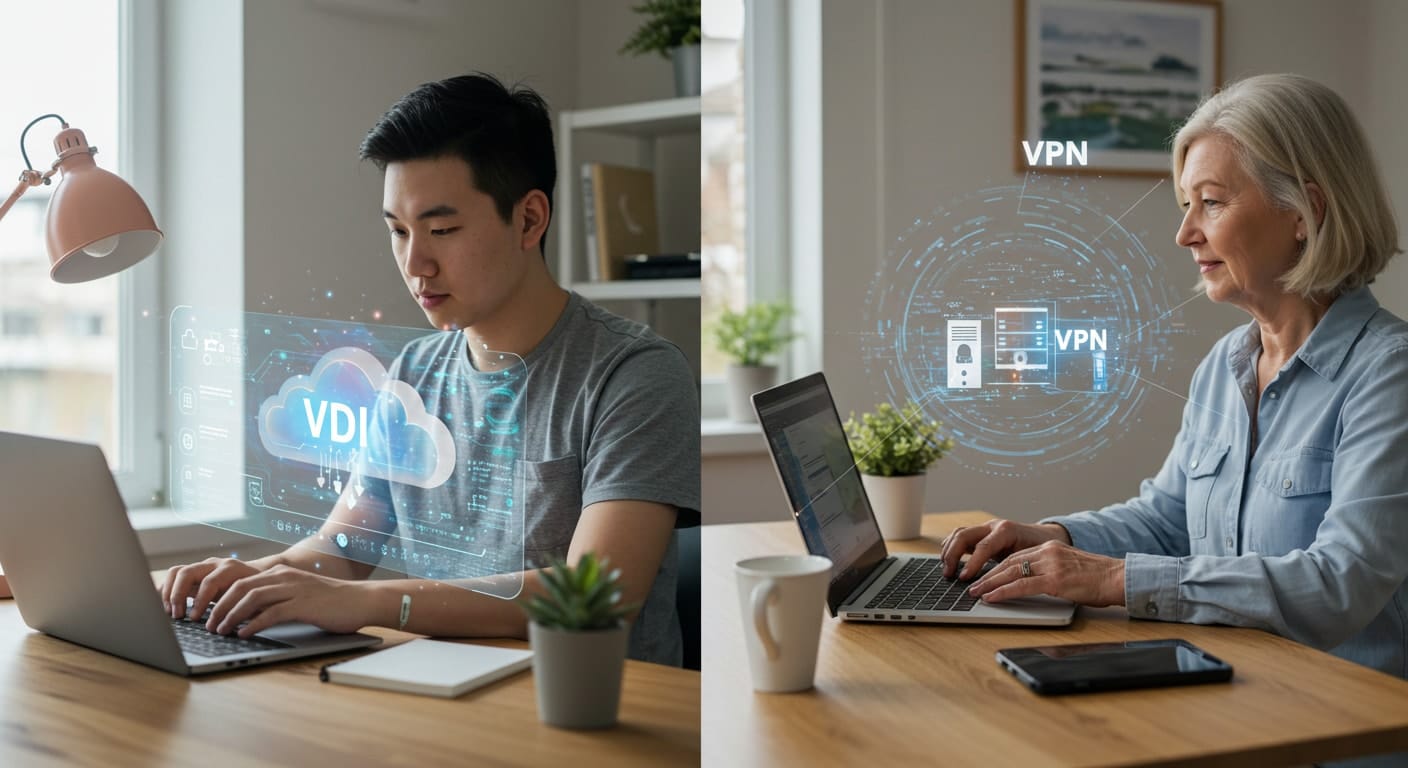The way people work has changed. Offices are no longer the center of productivity. Instead, teams are logging in from home, airports, coffee shops—wherever they need to be. That shift has made remote access more than a convenience. It’s now a critical part of daily operations for businesses of all sizes.
To meet this demand, IT teams are turning to two primary solutions: Virtual Private Networks (VPNs) and Virtual Desktop Infrastructure (VDI). Both are designed to help remote users connect securely to workplace resources. But how they work—and what they’re best suited for—are fundamentally different.
VPNs create a secure tunnel between an employee’s device and the company network. VDI hosts the entire desktop experience on a central server, delivering it over the internet. One offers access. The other offers control.
If you’re evaluating these options for your organization, understanding their differences isn’t just helpful—it’s essential. This article breaks down how each one works, where each shines, and which fits best based on your needs.
1. What Is a VPN, and How Does It Work?
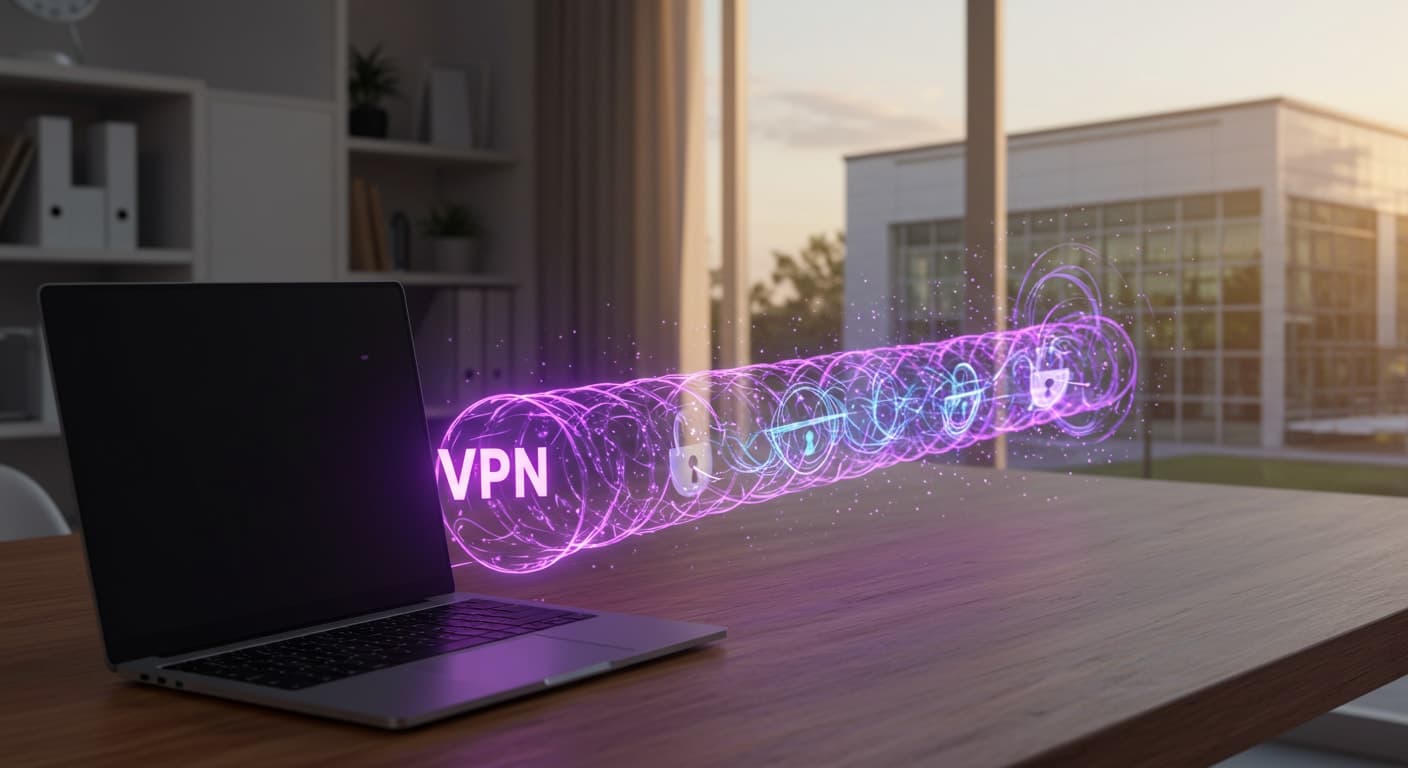
A Virtual Private Network, or VPN, is a tool that allows users to securely access resources on a company’s private network while working remotely. Instead of connecting directly over the public internet, the VPN acts as a secure bridge, encrypting all data traveling between the user’s device and the internal network.
Here’s how it works: when you connect through a VPN client (software installed on your laptop or phone), it establishes a secure tunnel to a VPN server—typically located on your company’s premises or in the cloud. This tunnel encrypts your network traffic, hiding it from external threats and giving you access as if you were physically in the office.
Common use cases include:
- Connecting to a corporate network to access files and applications
- Using remote workstations from home or on the go
- Securing connections over public Wi-Fi in airports, hotels, or cafés
Most VPNs require setup from a VPN provider or IT team, and performance can vary based on the user’s internet connection and the location of the VPN server.
While VPNs do provide secure remote access, they also depend heavily on the security of the endpoint device. If a laptop is compromised, the VPN tunnel doesn’t protect the internal network—it simply extends it. That’s why VPNs are often paired with other security tools, but even then, the exposure risk is real.
2. What Is VDI, and How Does It Work?
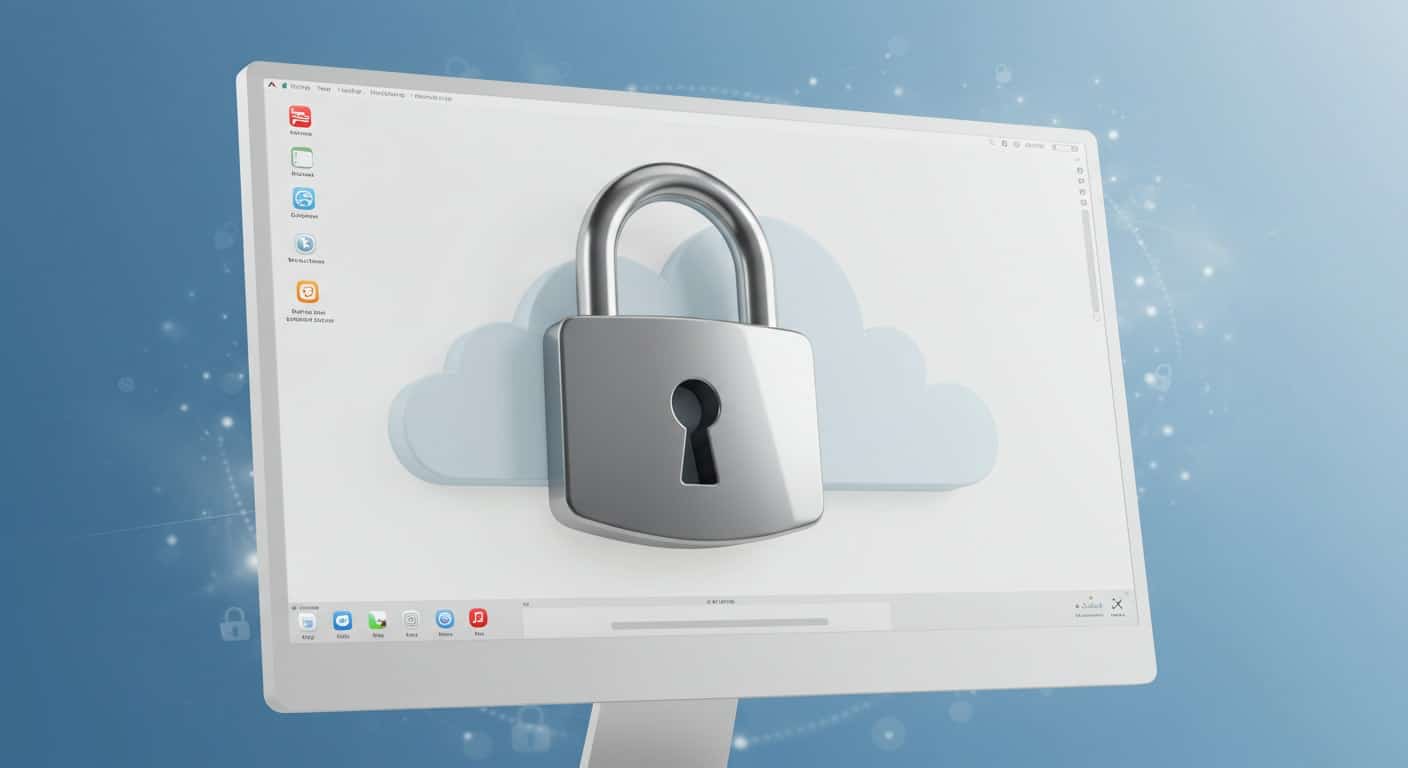
Virtual Desktop Infrastructure (VDI) is a remote access technology that allows users to connect to a full desktop environment hosted on a central server or within a data center. Unlike a VPN, which tunnels into an existing device, VDI delivers an entire virtual desktop through a secure, internet-based connection.
When a user logs in, they aren’t accessing their own laptop or office machine—they’re launching a desktop that lives on a remote server. That desktop includes the operating system, apps, files, and settings they need to work, all delivered to whatever client device they’re using: laptop, tablet, or even a browser.
This approach creates an environment where:
- Data stays on the server, not on personal devices
- IT teams can enforce policies across all desktop environments
- Users gain access to the same tools no matter where they log in from
VDI runs on virtual machines, allowing IT to host multiple user desktops on a single physical server. This setup enables centralized management, simplified updates, and scalable infrastructure for growing teams.
It also removes the risks that come with remote devices—since nothing is stored locally, there’s little exposure if a device is lost or compromised. That makes VDI particularly useful for companies handling confidential data, managing distributed teams, or supporting remote employees with varying hardware.
In essence, VDI transforms the desktop into a secure, flexible, cloud-hosted workspace—accessible from anywhere, without compromising control.
3. VDI vs VPN: What Are the Key Differences?
While both VDI and VPN aim to enable remote access, they achieve that goal in very different ways. VPN extends the corporate network to the user’s device. VDI brings the entire desktop experience to the user, without ever leaving the control of the data center.
Understanding the core distinctions will help you assess which is better aligned with your security posture, performance needs, and IT strategy. Here’s a quick breakdown:
| Feature | VPN | VDI |
|---|---|---|
| Access Type | Tunnel to corporate network | Hosted virtual desktop |
| Devices | Connects from the user’s device | Desktop runs on a central server |
| Data Location | Resides on local machine | Stays within centralized data center |
| Security | Depends on VPN & device security | Managed, centralized control |
| Performance | Tied to user’s internet connection | Controlled server-side performance |
| Use Case | File access, basic apps | Full desktop environments, enterprise apps |
Where VPN gives users a pathway into the local network, VDI offers a self-contained desktop that doesn’t rely on local hardware or storage. For simple file access or light work, VPN may be sufficient. But when users need full apps, a consistent desktop experience, or tighter security, VDI is built to deliver.
The difference isn’t just architectural—it’s operational. VDI grants control where VPN grants access.
4. Which Is More Secure: VDI vs VPN?
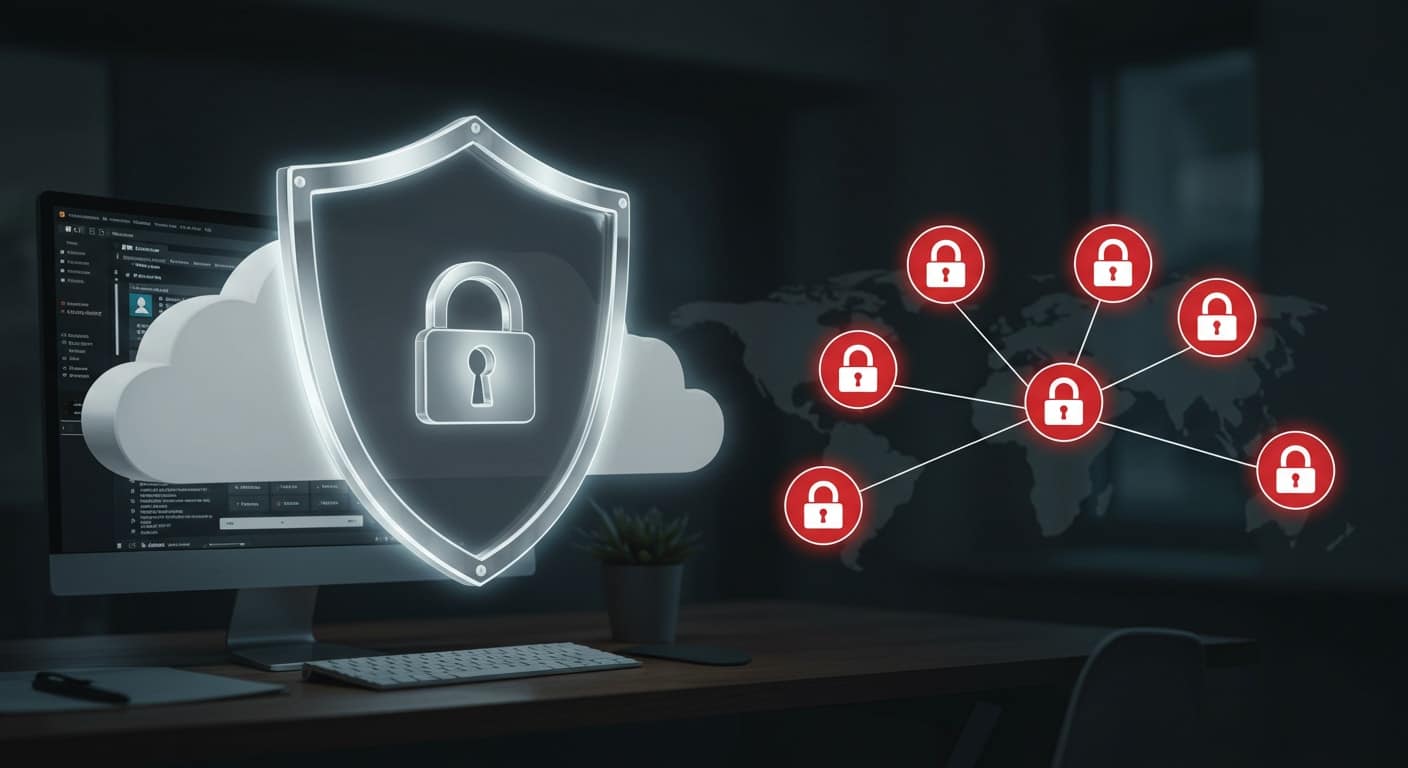
When it comes to security, VDI and VPN take very different approaches—and the implications are significant.
A VPN creates an encrypted tunnel between the endpoint device and the company network, shielding data in transit. But once connected, the security of the session depends heavily on the device itself. If malware exists on that laptop, the VPN becomes a fast track into the broader network. That’s a serious risk, especially with personal devices or poorly maintained machines.
VDI, on the other hand, centralizes everything. The desktop, applications, and sensitive data all live on a remote server, not on the user’s hardware. Nothing is stored locally. If a device is lost, compromised, or infected, the virtual desktop remains unaffected.
VDI also supports Zero Trust architectures, where access is continuously verified. This, combined with centralized control, limits lateral movement within the system and greatly reduces the risk of data breaches.
Another concern with VPN is visibility. The use of real IP addresses over the public internet can introduce vulnerabilities, especially if your VPN provider isn’t rock-solid.
In short, both can be secure—but only VDI offers built-in isolation, consistent enforcement, and reduced exposure. When data protection is critical, VDI has the edge.
5. How Do VPN and VDI Perform Under Real-World Conditions?
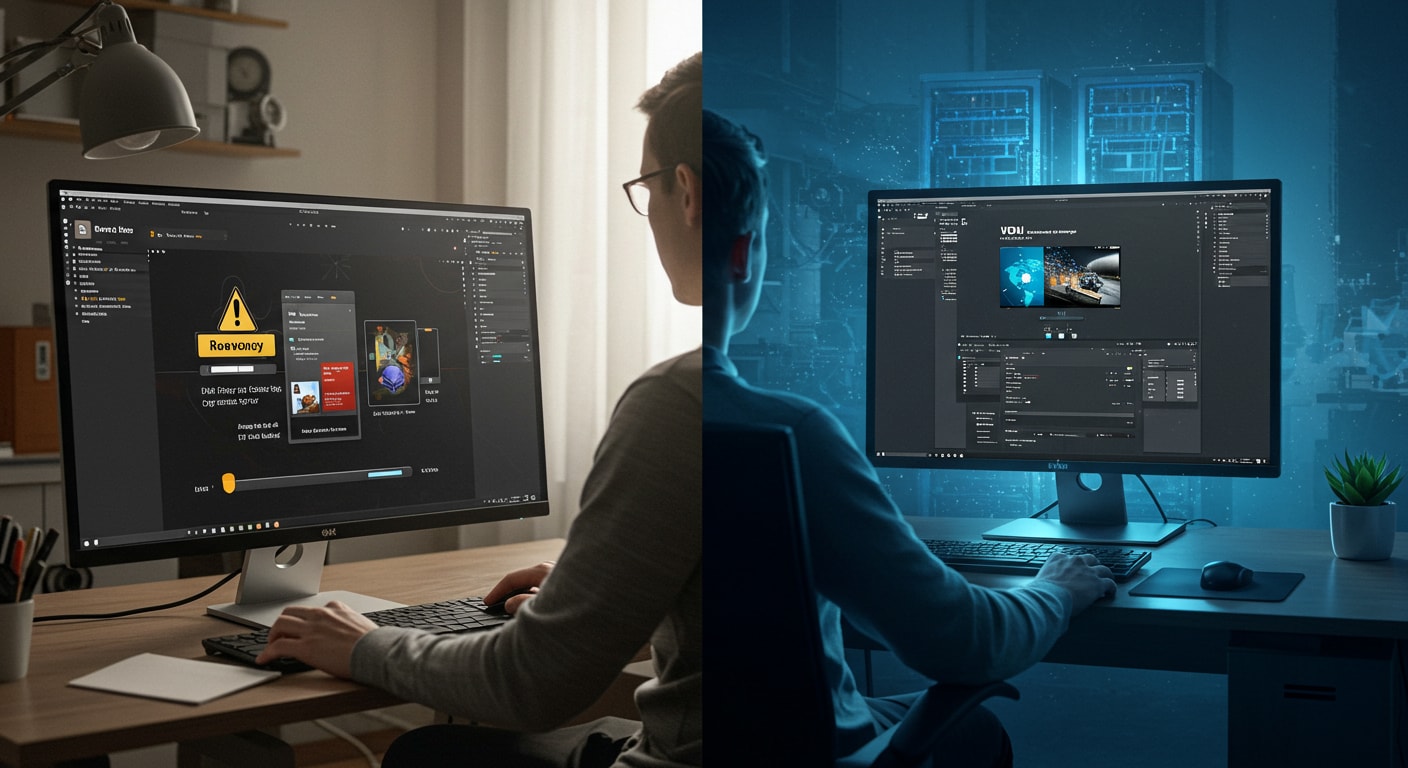
Performance matters—especially when your remote workforce depends on it to stay productive. This is another area where the differences between VPN and VDI become clear.
VPN performance depends on multiple variables:
- The quality of the user’s internet connection
- Bandwidth between the VPN server and the corporate network
- Load on the VPN infrastructure during peak times
Heavy traffic, throttling, or congestion can slow things down quickly. Even routine tasks like file access or using a CRM tool can lag if the tunnel is saturated. And for graphics-heavy applications like CAD or video editing? VPN simply wasn’t built for that.
VDI shifts the burden away from the user’s network. Because the virtual desktop runs in a data center, performance is managed centrally. Users interact with a streaming session, not a direct pipeline to sensitive assets.
This means:
- Faster load times for large files
- Better support for high-performance apps
- Minimal lag, even on low-powered devices
For everyday work, VPN might suffice. But for bandwidth-heavy tasks, VDI provides a smoother, more reliable experience—especially when paired with modern streaming tech and geo-optimized infrastructure like Apporto’s.
6. What About Setup and Management Complexity?
On the surface, VPN is easier to get started with. A VPN client is installed, credentials are entered, and the user connects. From an IT standpoint, it’s relatively low effort—at least initially.
But that simplicity comes at a cost. As your user base grows, managing multiple VPN connections across a range of endpoint devices can get messy. You’re responsible for ensuring every device is patched, every tunnel is secure, and every access request is appropriate. Centralizing policy enforcement becomes a juggling act.
VDI, in contrast, takes more effort to deploy upfront. Setting up the virtual machines, provisioning storage, and configuring the central server infrastructure requires planning. But once it’s in place, management becomes far more streamlined.
With VDI, IT teams:
- Push updates from a single location
- Enforce security consistently across all sessions
- Onboard or offboard users without touching their physical devices
Scaling is easier, too. Instead of provisioning more VPN licenses or chasing device compliance, you just spin up more desktops. It’s a centralized solution designed for long-term sustainability.
If you’re building for the future—and want fewer support tickets along the way—VDI gives you more control with less sprawl.
7. Which Solution Is Better for BYOD and Personal Devices?
In today’s hybrid workplace, Bring Your Own Device (BYOD) policies are increasingly common. But they also bring added security challenges—especially when employees use personal laptops or tablets to access company resources.
With VPN, you’re extending your corporate network directly to the user’s device. That means if their laptop is compromised, so is your network. Even with encryption, the VPN connection provides broad access, and there’s little separation between confidential data and the rest of their system.
VDI takes a fundamentally different approach. All applications, data, and activity reside in the remote server, never on the device itself. The user simply streams a virtual desktop, and once the session ends, no files or information are left behind.
This isolation is what makes VDI far safer for remote employees using personal devices. It allows them to work from anywhere—without putting your private network at unnecessary risk.
8. How Do Cost and Licensing Compare?

At first glance, VPNs look like the more affordable option. They typically have lower upfront costs and minimal infrastructure requirements. Just install a VPN client, configure the VPN server, and you’re good to go.
But as your team grows, so does the complexity. Managing VPN access across multiple devices, supporting bandwidth needs, and securing endpoint devices can quickly inflate costs. VPNs also do little to reduce hardware needs or IT workload.
VDI, while more resource-intensive to deploy, offers better long-term value. Hosting multiple virtual machines on a centralized server reduces the need for high-powered endpoints. You can consolidate servers, streamline data storage, and avoid purchasing new laptops for every new hire.
Licensing structures also differ. VPN licenses are often tied to the number of simultaneous users, while VDI infrastructure allows for dynamic resource allocation across a shared pool.
Most importantly, VDI brings predictable cost control. Once deployed, the ability to manage desktops centrally and reduce support requests translates to lower operational costs over time. Especially for businesses scaling rapidly or managing remote teams, VDI becomes the more sustainable—and cost-efficient—choice.
9. Which One Offers Better Control for IT Teams?
When it comes to control, VDI clearly leads.
VPNs provide access, but they shift much of the responsibility to the user’s device. That means patching, policy enforcement, and endpoint security can vary wildly—especially in BYOD environments. You’re trusting that the employee’s setup is as secure as your own.
VDI, on the other hand, centralizes everything. IT teams manage the remote desktop directly from a centralized server, giving full visibility into sessions, activity, and file access. Software deployment is uniform. Updates are pushed instantly. Security policies are enforced without relying on users to follow them.
With VDI, you don’t just give users the tools—they access those tools in a controlled, monitored environment. You maintain oversight, control access, and reduce exposure across the board.
For organizations that prioritize governance, consistency, and centralized management, VDI offers the kind of operational clarity that VPNs simply can’t match.
10. When Should You Use VDI Instead of VPN?
There’s a place for both VPN and VDI—but they aren’t interchangeable. Choosing the right one depends on what your organization needs to protect, how your users work, and what kind of control you want to maintain.
VDI is the better choice when:
- You’re handling sensitive data that can’t risk local exposure
- Your teams are distributed and rely on remote workstations
- You need to support multiple virtual machines from a centralized hub
It’s particularly useful for companies that want standardized desktop environments, streamlined support, and a scalable foundation for growth. In contrast, VPN may be suitable for occasional file access or light remote tasks—but it’s not built for enterprise-grade performance or deep IT oversight.
If your organization is moving beyond basic access and into full digital workspace management, VDI is the next logical step.
11. How Does Apporto Combine the Best of VDI Without the Overhead?
Apporto takes everything that works about VDI—and removes the friction that holds most teams back.
There’s:
- No software to install
- No VPN clients to configure
- No complex infrastructure to maintain
Instead, users simply log in through their browser and access a full virtual desktop hosted in the cloud. Apporto supports multiple operating systems, works across all major remote devices, and is built with Zero Trust security at its core.
Whether you’re managing remote users, scaling an SMB, or running an educational institution, Apporto delivers a high-performance experience without the headaches of traditional VDI.
It’s fast. It’s secure. And it’s simple to manage—because complexity shouldn’t be the price of control. Try Apporto now
12. Final Thoughts: VDI vs VPN — What’s Right for You?
Remote access isn’t optional anymore—it’s foundational. But the way you deliver it matters.
VPNs offer ease and low setup costs but come with limitations in scalability, control, and security. VDI, on the other hand, creates a managed, secure workspace from anywhere—perfect for teams that need reliability and flexibility at scale.
Ultimately, the choice isn’t just about today’s convenience. It’s about tomorrow’s strategy. As workforces grow more remote and data becomes more critical, you need solutions that adapt with you.
Looking for a smarter way to deliver remote desktops? See how Apporto changes the game.
13. Frequently Asked Questions (FAQs)
What is the key difference between a VPN and VDI?
VPN provides secure access to a network, while VDI delivers an entire desktop experience from a centralized server.
Is VDI more secure than using a VPN?
Generally, yes. VDI keeps data off personal devices and supports centralized security controls.
Can VDI and VPN be used together?
Yes, some organizations layer them—but with modern browser-based VDI, it’s often unnecessary.
Does Apporto replace the need for a VPN?
In most cases, yes. Apporto eliminates the need for VPN software by delivering desktops directly through the browser.
How does VDI protect against data loss on personal devices?
With VDI, data stays in the cloud or on the central server—never on the local machine—so even if a device is lost, your data stays safe.

